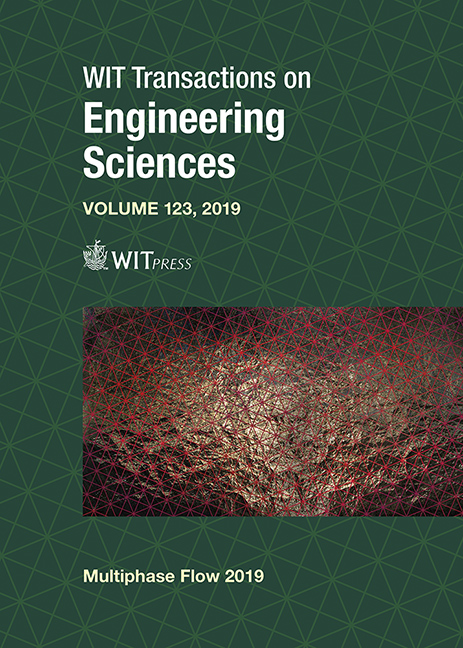EXPERIMENTAL STUDY OF THE INTERFACIAL WAVES PRODUCED IN UPWARD VERTICAL ANNULAR FLOWS WHEN VARYING THE LIQUID-PHASE SURFACE TENSION
Price
Free (open access)
Transaction
Volume
123
Pages
12
Page Range
21 - 32
Published
2019
Size
713 kb
Paper DOI
10.2495/MPF190031
Copyright
WIT Press
Author(s)
YAGO RIVERA, JOSÉ-LUIS MUÑOZ-COBO, CÉSAR BERNA, JOSÉ-LUIS CUADROS, ALBERTO ESCRIVÁ
Abstract
A flow pattern, which appears in many industrial applications, is annular two-phase flow. Its main characteristic is that the main portion of the liquid mass is located at the walls of the tube forming an annulus, while the gas phase flows through the annulus core dragging small liquid drops. These drops are largely produced by the interactions of the gas-phase flowing through the gas core with the peaks of the disturbance waves, which are produced in the liquid/gas interface. This paper describes a set of experiments performed at the Vertical Annular Film Flow facility, in the annular flow regime, with upward liquid and gas flows, at different flow conditions varying the liquid surface tension by adding small amounts of 1-butanol to the water. The main property of 1-butanol is that small amounts of this substance significantly change the surface tension while the viscosity remains practically unchanged. The set of experiments were carried out inside a vertical tube 44 mm inner diameter, and 4.5 m high, the annular flow was created by means of a porous material with known porosity coefficient. The experimental conditions range from 2000 to 3500 l/min for the gas volumetric flow rate, and from 4 to 10 l/min for the liquid volumetric flow rate at atmospheric conditions. Several experiments have been carried out on 1-butanol varying the water surface tension from 72 x 10-3 NM-1, to 45 x 10-3 NM-1, at intermediate surface tensions. To measure the height of the disturbance waves and the thickness of the film we use a conductance probe – the electrical signal collected in the receiver sensor depends on the thickness of the liquid film layer. Correlations for the amplitude of the disturbance waves, the film base thickness and other physical magnitudes have been obtained with a good value for the coefficient of determination and the root mean square error.
Keywords
annular flow, interfacial disturbance waves, film thickness, ripple waves





